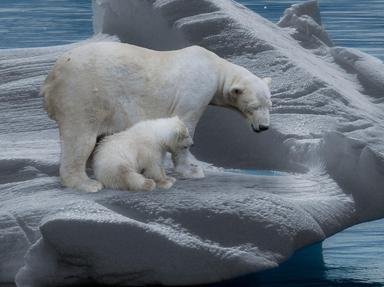Quiz Answer Key and Fun Facts
1. We'll begin our journey with the caribou. However, you might know this specific animal by a different name, which would be...?
2. The musk ox looks like a very hairy cow, but which of these animals is it actually most closely related to?
3. Compared to a normal rabbit or hare, which distinguishing difference would you NOT see on an Arctic hare?
4. Let's stay with the Lepus genus - the snowshoe rabbit (or snowshoe hare) is named for its feet. On which legs will you find the enlarged "snowshoe" feet?
5. The North American beaver is famous for its dam building. However, this activity is not, as one might think, a year-round task for them. In which season do beavers do most of their damming work?
6. When one thinks of lemmings, the first thing that comes to mind is the tale of them committing mass suicide by jumping off cliffs. What is the truth behind that tale?
7. Voles, with over 150 species, exist throughout most of Europe, Asia and America. Which one of these vole species is actually resident in the polar regions?
8. You may associate the name "porcupine" with mostly tropical and subtropical ranges, but a single porcupine species thrives in subpolar and cold temperate regions. What is its name?
9. The Arctic ground squirrel has been hunted by the Aleutians for its warm fur, a fact reflected in its alternate, local name. What is this rodent also called?
10. All Arctic herbivores are mammals? Not quite - the ptarmigan would certainly take issue with that statement. What kind of animal is it?
Source: Author
WesleyCrusher
This quiz was reviewed by FunTrivia editor
rossian before going online.
Any errors found in FunTrivia content are routinely corrected through our feedback system.
